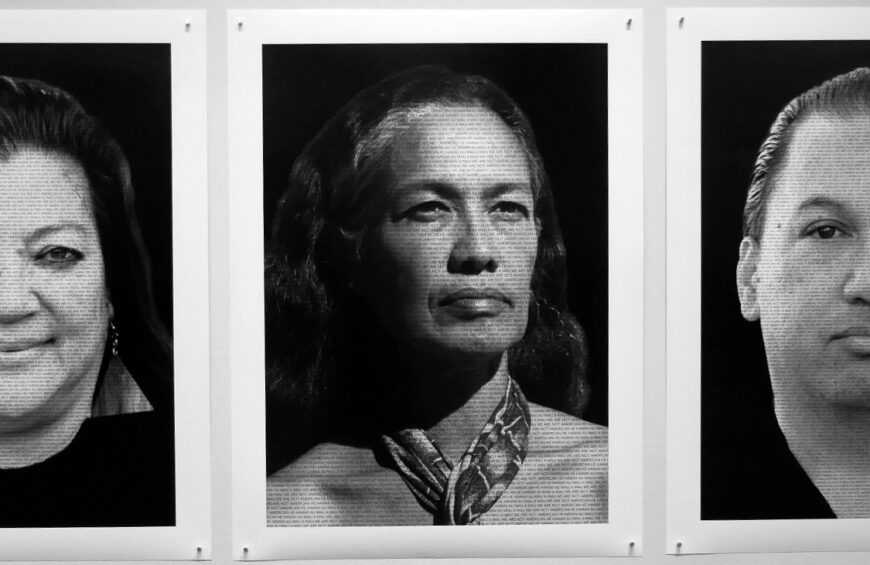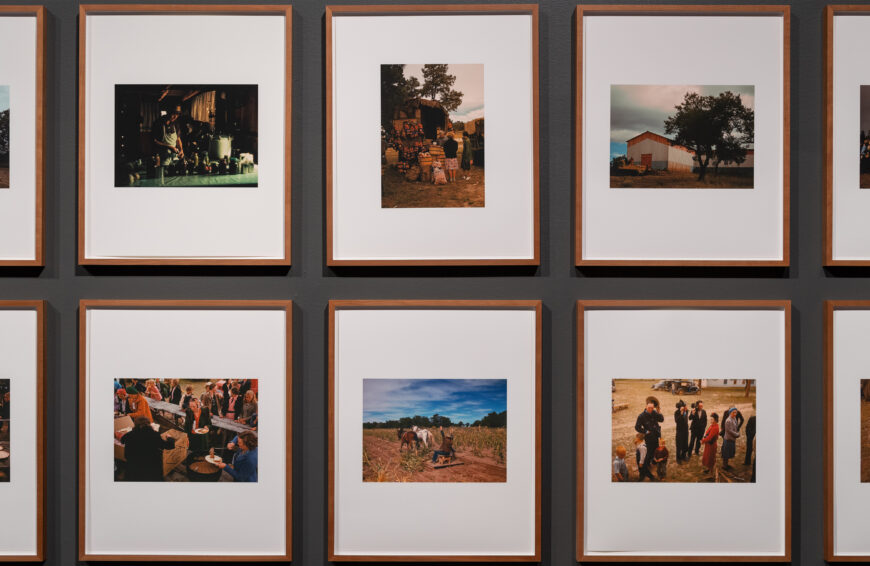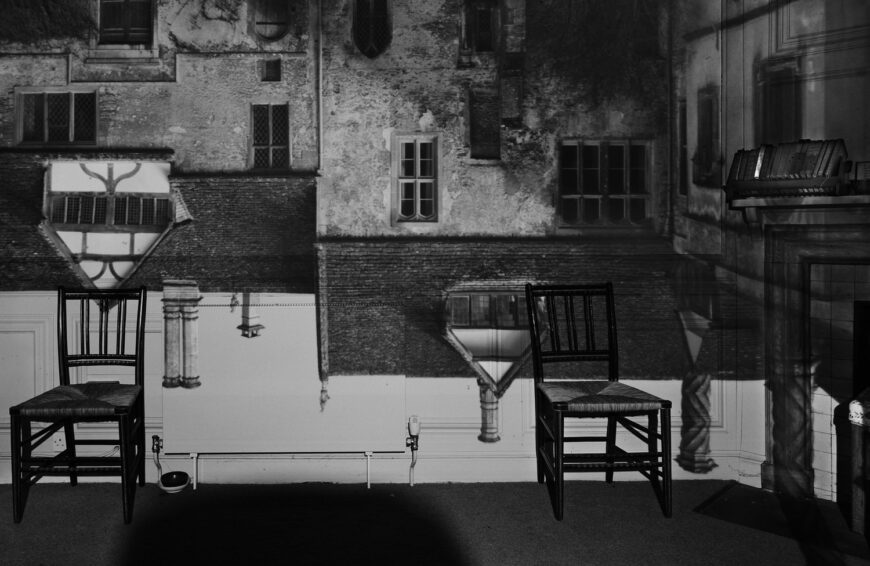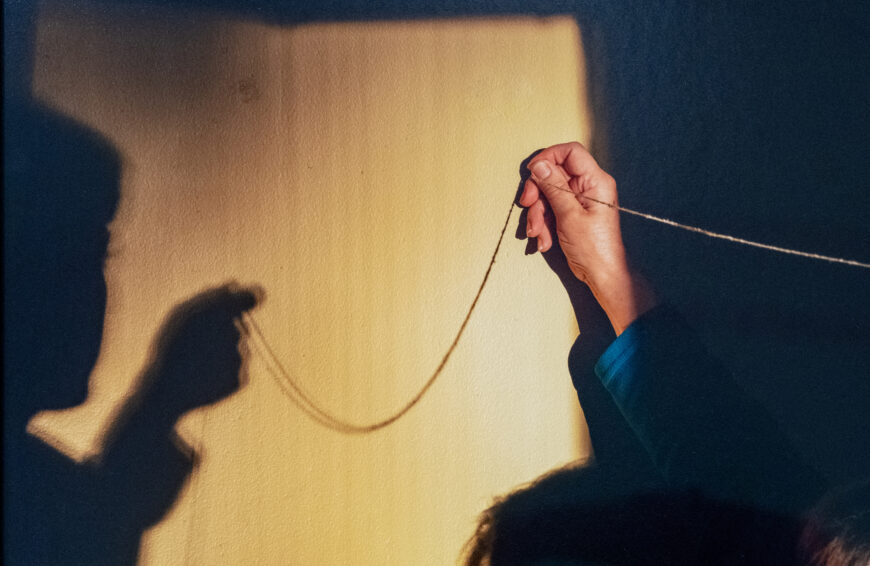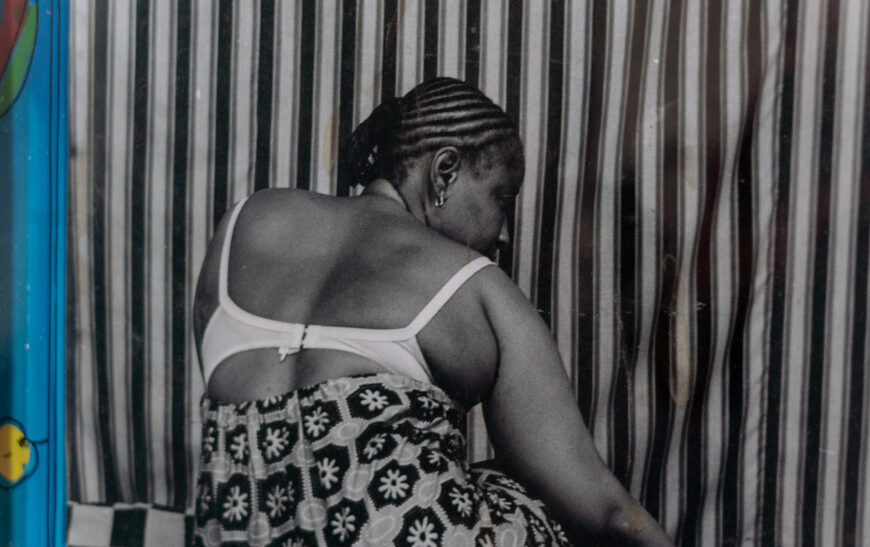Sherman creates a series of film stills starring herself—but there is no film.
Cindy Sherman, Untitled Film Still #21, 1978, gelatin silver print, 19.1 x 24.1 cm (The Museum of Modern Art, New York)
[0:00] [music]
Dr. Shana Gallagher-Lindsay: [0:03] Hi, I’m Shana Lindsay.
Dr. Beth Harris: [0:06] I’m Beth Harris.
Dr. Shana: [0:08] We’re here to talk about this image. It’s called “Untitled Film Still #14.”
Dr. Beth: [0:13] It does look like a film still.
Dr. Shana: [0:15] It does. There are certain things that give it that look, which is what she’s going for here.
Dr. Beth: [0:21] So it’s not really a film still.
Dr. Shana: [0:23] Right, exactly. It’s the appearance that this is a film still.
Dr. Beth: [0:29] She did a whole series of film stills?
Dr. Shana: [0:33] Right.
Dr. Beth: [0:30] Photographs that look like film stills.
Dr. Shana: [0:32] Over a number of years. This is sort of at the beginning of that phase when she does that. This is one of the earlier ones. She wants all of them to look like they might be from some sort of a narrative.
Dr. Beth: [0:44] This is Cindy Sherman herself.
Dr. Shana: [0:46] Right. That’s the thing that a lot of people don’t recognize, that she’s in the photograph herself. She always dresses up and really kind of morphs from one…
Dr. Beth: [0:56] She can look really different in each of them.
Dr. Shana: [0:59] Exactly. She dresses up; obviously makeup helps. In this case she’s trying to look like she’s in the 1960s, probably.
Dr. Beth: [1:08] It makes me aware of the conventions of how things look in movies. The sort of rhetoric of that kind of storytelling.
Dr. Shana: [1:19] Exactly. The lighting. She’s…she’s…
Dr. Beth: [1:22] Just the way she moves her head, the look in her eye.
Dr. Shana: [1:26] In almost all of these film stills, she looks reactive. She’s reacting to something, which is part of what’s giving us this clue that we’re looking at something that’s supposed to be narrative. She’s darting her eyes away.
[1:38] It’s hard to say what, people often read in different ways — disgust, fear, anxiety. She’s never a totally self-possessed person. She’s always in relation to something that’s like somehow outside of our frame of reference here.
Dr. Beth: [1:51] I wonder what says about being a woman.
Dr. Shana: [1:54] Right, exactly. I think that’s some of the issue that she’s trying to raise here, that perhaps our sense of self is contingent, always on something else. Women’s sense of self is always contingent on something else.
Dr. Beth: [2:09] And that being a woman is always in some way a performance.
Dr. Shana: [2:14] Yes, that’s oftentimes the way these are understood, that she’s kind of masquerading, donning these different outfits. Some people see this as kind of liberating, that what she does is she, in some ways, dislodges the idea that your identity is fixed.
Dr. Beth: [2:34] It can be chosen instead.
Dr. Shana: [2:36] Right, so by masquerading, you’re choosing to act in a certain way, or choosing to make yourself read or understood in a certain way. Some people see her film stills as liberating examples.
Dr. Beth: [2:50] For women?
Dr. Shana: [2:51] For women, yes, in particular.
Dr. Beth: [2:54] Your identity isn’t something that’s culturally imposed, but something that’s freely chosen somehow.
Dr. Shana: [3:00] Freely chosen, but then also, what’s ironic, is that in the series, she chooses these ultra-feminine roles and…
Dr. Beth: [3:08] Very stereotypical in a way.
Dr. Shana: [3:10] Because they are reacting, they seem slightly fragile. It plays on both things. I think she wants to borrow the idiom from film that was established by people like Alfred Hitchcock, the blonde victim, to some degree.
Dr. Beth: [3:26] Something about to swoop down on her and…
Dr. Shana: [3:29] Right. And nothing ever does.
Dr. Beth: [3:30] No.
Dr. Shana: [3:31] It becomes, also, about her practice, about Cindy Sherman’s practice, as more so, certainly, than the narrative, which here does not exist. There is no story to be told.
Dr. Beth: [3:41] They never develop into a story.
Dr. Shana: [3:43] Exactly. The things that she’s chosen photographically here, the upward focus, you’re at a very privileged perspective on this person, very, very close, so you know this couldn’t be a snapshot. It would be very hard to get a snapshot like that.
[3:58] By just angling, positioning the camera, she’s edited out anything that looks contemporary. She’s able to put herself in front of these older buildings and have it look authentic.
Dr. Beth: [4:07] Like it’s from 20 years earlier.
Dr. Shana: [4:09] Which are all things, of course, a filmmaker is doing.
[4:11] [music]


